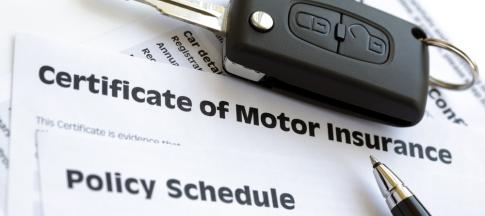
There are many things that can add penalty points to your driving licence, such as speeding, running a red light and so on.
Motoring offences are often caused by drivers not understanding or following the rules of the road. Let’s explore conviction codes and how penalty points affect your car insurance.
Do all penalty points affect insurance?
Yes, all penalty points can increase your insurance premium in most circumstances.
When getting a car insurance quote you must be honest about any previous claims or motoring offences as it could affect your cover. The actual impact depends on how old the offences are and the number of points you have.
We list some examples of how your driving offences can impact other car costs below. The figures only apply to new customers getting a quote from Admiral.
How much do motoring offence codes affect your car insurance by?
We’ve gathered our own data from a 6-month period between 1 August 2024 and 31 January 2025. Let’s break it down to see how drivers’ premiums have been affected by motoring offences.
With a CU80 motoring offence (breach of requirements as to control of the vehicle, like using a mobile phone), the average increase is 38% for one to three points For more than three points, the average is 49%. The average for more than seven points is an increase of around 76%.
According to our data, drivers who receive SP30s, SP50s and SP10s (all speeding offences) see an average premium increase of 10% with up to three points. If the driver has more than seven points on their licence, this average increases to 42%.
A member of Admiral's Pricing team said:
"Our claims statistics have proven that customers with penalty points and motoring offences in the last five years, have more driving incidents and make more claims. This is why we need to know about them before offering a quote."
How much are the increases for the most common driving offences?
Here's a table of our premium increase data as a result of penalty points being added to a licence.
Average Increase (%)
| Conviction code | 1-3 points | 4-6 points | 7+ points |
|---|---|---|---|
| SP30 | 10% | 26% | 42% |
| SP10 | 10% | 26% | 42% |
| SP50 | 10% | 26% | 42% |
| CU80 | 38% | 49% | 76% |
How are penalty points issued?
The police are responsible for handing out penalty points to drivers, but how you get the points depends on the offence.
Speeding penalty points, for example, could come from a fixed camera, a parked speed van, an officer with a speed gun or you may just be pulled over by a police officer.
You may be given a verbal warning if you're pulled over, or potentially an on-the-spot fine and an endorsement if you have your licence with you.
If you don't, you'll need to provide your licence at a police station within seven days of getting the endorsement.
If you're caught speeding by a camera, you'll be sent a Notice of Intended Prosecution (NIP) and a Section 172 notice which will explain the offence. You'll need to reply within 28 days, sending back the name and details of the person driving at the time.
Other common penalty codes
| Conviction code | Meaning | Points added to licence |
|---|---|---|
| DD10 | Causing serious injury by dangerous driving | 3-11 |
| DD40 | Dangerous driving | 3-11 |
| DR10 | Driving or attempting to drive with alcohol level above limit | 3-11 |
| DR20 | Driving or attempting to drive while unfit through drink | 3-11 |
| LC50 | Driving after a licence has been cancelled (revoked) or refused on medical grounds | 3-6 |
| TS10 | Failing to comply with traffic light signals | 3 |
How long do penalty points last on your driving licence?
Most types of penalty points, things like SP30s (speeding on a public road) and CU80s (using your mobile phone) are on the licence for four years.
We ask for motoring offences in the last five years (or two and a half years for drivers under 18).
SP30s and CU80s are two of the most common driving offence codes held by drivers in the UK.
However, some offences could remain on your licence for up to 11 years because of their severity:
- Drink driving or drug driving, offence codes which start DR
- Offence codes CD40 to CD70, causing death by careless driving, whether due to alcohol or drugs
How can you avoid penalty points?
The best way to avoid penalty points is to drive sensibly. We help to reward good driving habits with our black box insurance, which tracks how our drivers behave on the road.
You can also try advanced driving lessons and refresh your Highway Code knowledge regularly.
Overall, always try to drive safely. It’s not just the penalty points you have to worry about, it’s the long-term impact too.


